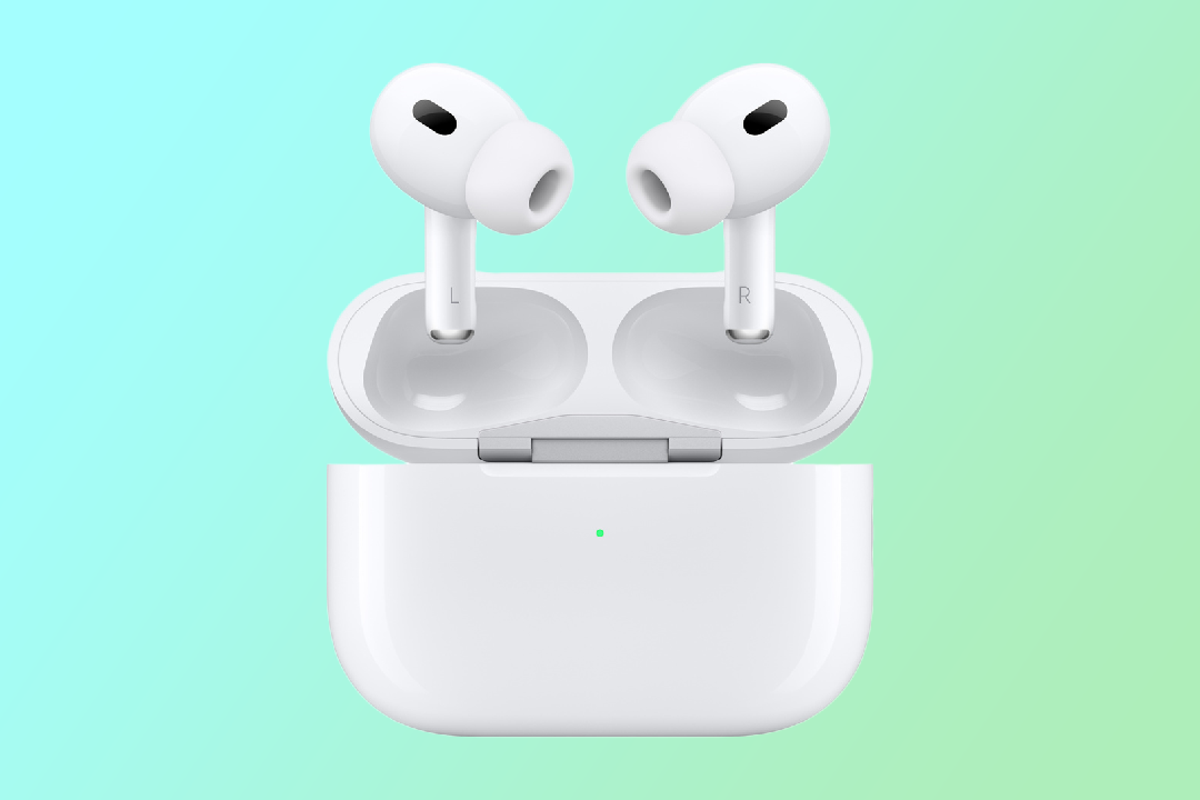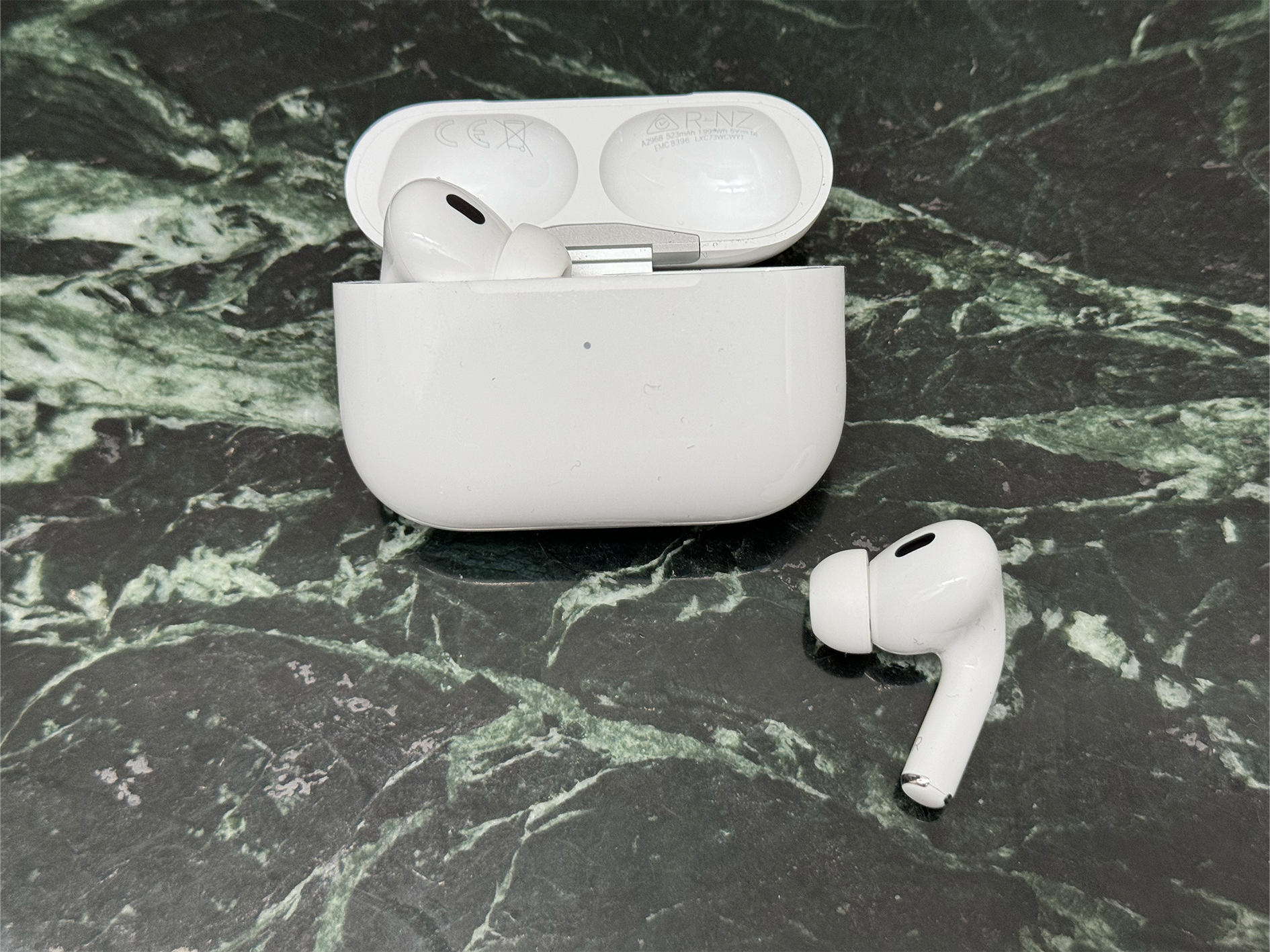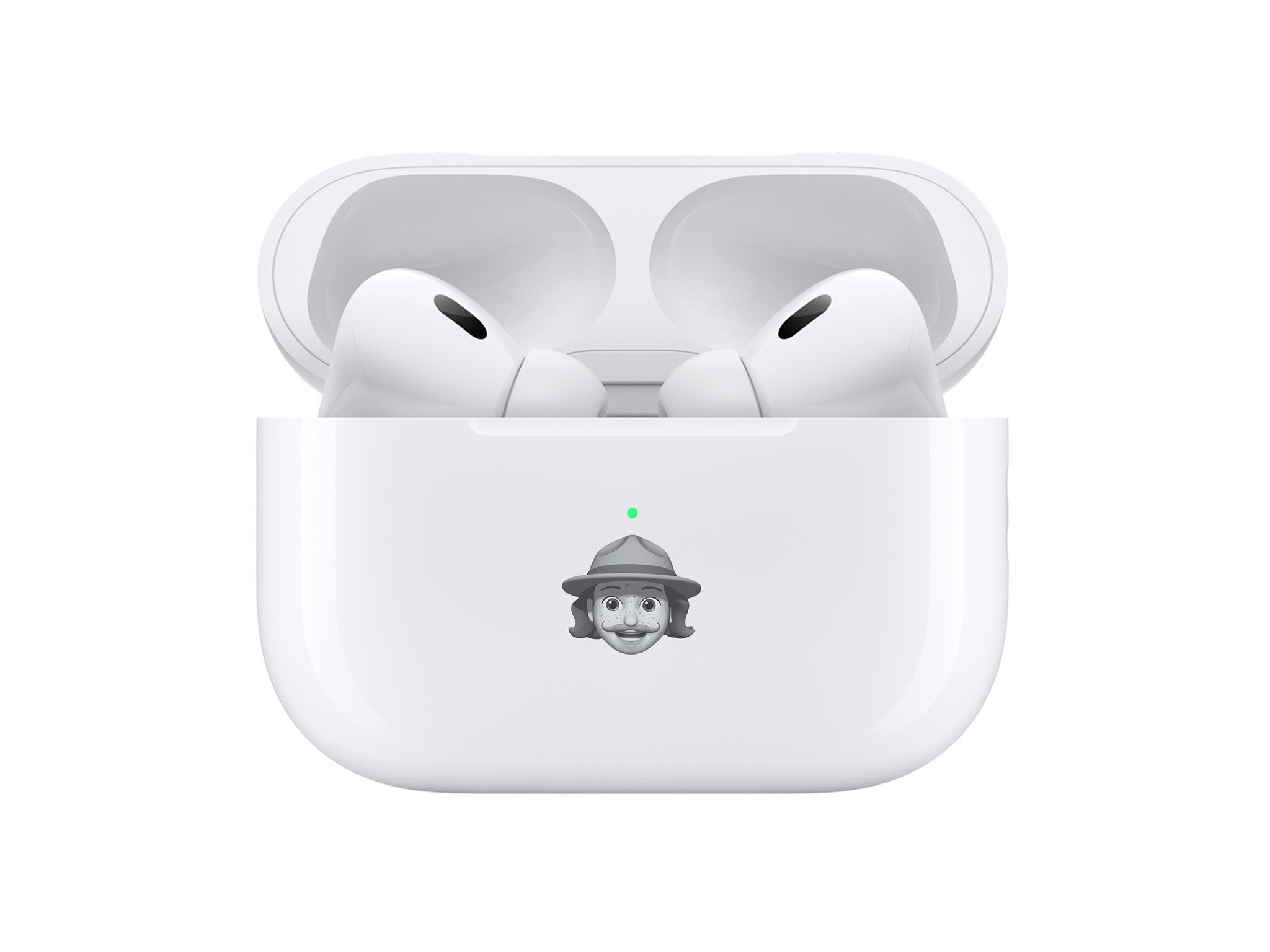
The 2nd generation pro AirPods from Apple may have hit the shelves almost three years ago, but they remain a popular choice. Though the wireless earbuds have been replaced by the Apple Airpods Pro 3, and technically discontinued by Apple, you can still find them on sale for now. While ancient by the fast-moving standards of tech, we still recommend this older model nearly three years on.
These earbuds offer extra features related to audio quality, noise-cancelling performance and, just as importantly, battery life, which the first generation lacked. The processor offers “personalised spatial audio”, which requires mapping your ear with the iPhone camera for a personalised EQ.
They can work as medical-grade hearing aids, along with a clinical-grade hearing test, added loud sound protection, the option to shake or nod your head to answer calls, and voice isolation to isolate background noise on calls. Like the new Pro 3, they also get many of the benefits of iOS 26, including Live Translation, a feature which allows you to have real-time conversations in different languages.
Though Apple’s classic AirPods are on their 4th generation, and the Pro 3 has replaced them, if you can find them on sale, they still have features worth recommending.
How we tested
I tested the AirPods Pro 2 in various environments to check out the adaptive transparency mode, which aims to ensure you can hear the outside world while reducing unpleasant environmental noise.

I listened at length to check for comfort and to see how long the battery really lasts. I also tested call quality (for the wearer and for the person at the other end of the line). Most importantly, I checked to make sure that the earbuds actually sound good.
Why you can trust IndyBest reviews
Technology critic David Phelan has written about technology for the Independent since the late Nineties, and specialises in reviewing Apple tech. He’s been across all the latest Apple news for decades and knows exactly what makes for a good pair of headphones.
Apple AirPods pro 2nd gen

Active noise-cancellation: Yes
Spatial audio: Yes
Sensors: Dual beam-forming microphones, inward-facing microphone, skin-detect sensor, motion-detecting accelerometer, speech detecting
Processor: Apple H2, Apple U1 chip in charging case
Battery: Up to six hours of listening and up to four and a half hours of talk time
Battery including charging case: Up to 30 hours listening time and up to 24 hours talk time
Weight: Earbuds 5.4g, charging case 45.6g
Design
There are no obvious differences between the AirPods pro and the previous model, though the acoustic vents on the edges of the buds have been slightly rearranged.
You can tell the AirPods Pro apart from the latest, 4th-generation AirPods because the pro earbuds have silicone tips on the end to ensure a decent seal in the ear, which helps with noise isolation.
There are more of those tips on the pro model – along with the small, medium and large tips supplied before, there’s an extra-small option to ensure the perfect fit. This is good not just for noise reduction but to help ensure they don’t fall out of your ears.
This being Apple, there’s even an ear-tip-fit test in the iPhone software (go to ‘settings’ and if the AirPods Pro are connected, you’ll see them appear as an item on the first page. Tap the ear test (while you’ve got the earbuds in your ears) and you’ll hear a tune, so the software can work out if the AirPods are fitting well.
Setup, by the way, remains as sublimely easy as ever with AirPods. Just bring the AirPods Pro (still in their case) near your iPhone or iPad, for instance, open the case, and you’ll see a picture of them appear on screen. You choose to connect them and, well, then you’re done.
The biggest change in design applies to the charging case, which has a loop on the side to enable you to attach a lanyard to it. There’s a speaker on the underside of the case, too. It sounds like an odd inclusion, but the case includes Apple’s U1 chip, which means you can use the Find My app on your iPhone, say, to locate it when you’ve misplaced it. The speaker means the case can make sounds to let you know you’re close to it, like a game of hide and seek that only gadgets can play.
There’s one other change to the case – it has a MagSafe connector in it, so you can charge the AirPods pro in their case from the same MagSafe charger that works with compatible iPhones. You can also charge them using the Apple Watch charging puck, a feature that is exclusive to the AirPods Pro.
Engraving on AirPods cases is nothing new, but you can now get more personal than ever. Memoji is the name for the cartoony identity you can create for yourself to go with your Apple ID. Now, you can have this engraved on the case (but this also includes the 4th generation).
Sound quality
The new Apple H2 chip is central to the performance of the 2nd generation AirPods Pro – it has twice the transistors found on the previous H1 chip (if you’re counting, the number has gone up from 500 million to 1 billion).
So, what does that mean in audio terms? It’s pretty impressive. To start with, noise-cancelling is noticeably better than on the first-generation Pro earbuds, and that was industry-leading.
Apple claims the earbuds can reduce twice the noise of the previous model, partly because this chip is faster and can run more advanced algorithms. Apple says it’s been tuned to work better in environments such as cafes or busy offices.
In practice, noise-cancelling was good enough to reduce continuous sounds such as engine noise on a train, and, spookily, meant I couldn’t hear my fingers typing out this review.
Then there’s personalised spatial audio. First, use the front-facing camera (the TrueDepth camera) to provide the software with a front-on view of your face, followed by a view of each side of your face, to capture the shape of your ears. It takes less than a minute to do. The idea is that, when you’re done, the personalised audio sounds a lot better than non-personalised. Note that you can turn this off any time you like, but you will need to go through the set-up process again if you want to turn it back on at a later stage. The personalised settings carry across to your other devices as well, and this feature is also available on third-generation AirPods and AirPods Max.
Some other headphones have systems that can modify the sound quality, though rarely as easily as this, and the difference here between personalised and non-personalised is certainly noticeable. I can’t describe how it would be for you, but for me, the higher notes were more articulated, and vocals seemed more alive. Turning it off again meant the music seemed flatter. Some notes that seemed less present while the personalised setting was turned off then became punchier and clearer when it was on. It’s a subtle but effective improvement.
There’s a control mechanism for adjusting the playback volume – swiping the stem of the earbud. It’s tricky to learn but effective once you have.
Adaptive transparency worked well. It’s for those situations where you need to have contact with the real world, for a conversation perhaps, but don’t want to turn off the music. It’s hard to assess how much better this is, though it felt like some noises, such as road drills or sirens, were just a little less horrible, though they certainly still cut through.
It’s worth noting that even these AirPods Pro don’t let you play music in lossless quality, but the audio here is stunning nonetheless.
Performance and battery life
The improvements in audio quality are mostly down to the new H2 chip, which is highly effective. Things that AirPods users take for granted, such as good call quality, are as good as ever, while using the Find My app to locate the case was simple.
Battery life is better – not something you always hear with an updated gadget. The original AirPods pro managed four and a half hours with active noise cancellation turned on. That’s now up to six hours in the latest pro. This is more than the previous version managed with noise cancelling turned off (five hours). Talk time for phone calls is up by an hour, Apple says, to four and a half hours. And, while the feature of personalised spatial audio reduces listening time, at five and a half hours, this is still more than the longest listening time available on the first-generation pro.
These are Apple’s claims, but real-world testing suggested these figures are accurate.
Buy now £229.00, Apple.com
Should I buy AirPods Pro second generation in 2025?
You have several options for AirPods at the moment. One comparison is with the AirPods 4th generation. While there’s no doubt the entry-level AirPods (£119, Amazon.co.uk) are great value, and the fourth-generation model includes personalised spatial audio, AirPods Pro remain the go-to for audiophiles or those who relish the joys of great noise-cancelling.
Unlike the AirPods Pro 2, the newer AirPods Pro 3 (£219, Amazon.co.uk) have a slightly better fit and better ANC. They also have a heart rate monitor to help you track exercise. However, for a difference of £100, the two headphones are relatively similar, and you get many of the same iOS 26 features. The newer model is definitely better, but if your budget doesn’t stretch that far, it’s not a huge loss.
Keep updated on the latest Apple news and visit our dedicated tech section







